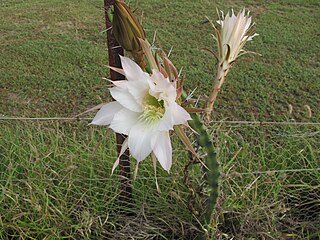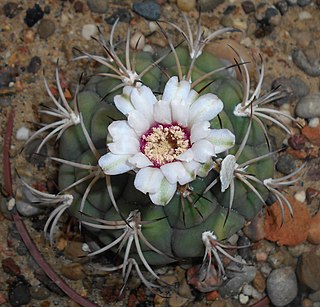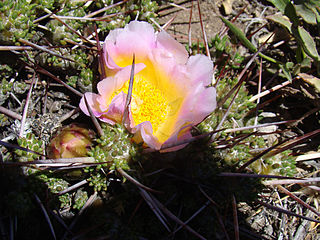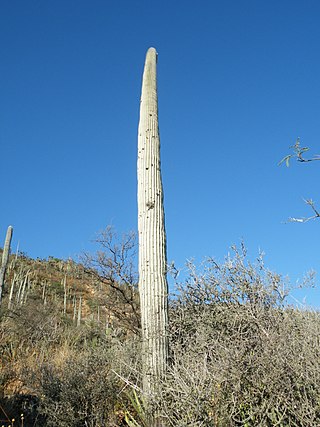
Stetsonia coryne, the toothpick cactus, is the sole species in the cactus genus Stetsonia. Stetsonia coryne grows to a height of 15 to 25 ft tall. It has white flowers.

Harrisia pomanensis is a species of cactus.

Gymnocalycium anisitsii is a globular cactus belonging to the family Cactaceae. The specific epithet honors the Hungarian pharmacist Dániel Anisits J. (1856-1911).

Lobivia cinnabarina is a species of cactus first described in 1885.

Harrisia tortuosa is a species of cactus in the Trichocereeae tribe.

Pelecyphora macromeris, the nipple beehive cactus, is a species of cactus in the United States and Mexico. In the Chihuhuan Desert, it is common and has a wide range.

Gymnocalycium monvillei is a species of Gymnocalycium from Argentina.

Armatocereus cartwrightianus is a species of Armatocereus from Ecuador and Peru.

Echinopsis aurea, is a species of Echinopsis found in Argentina.

Maihuenia patagonica, commonly known locally as chupasangre or siempre verde, is a succulent cactus shrub native to Chile and Argentina. Maihueniapatagonica is remarkably tolerant to moisture and cold temperatures.

Pelecyphora tuberculosa, the corncob cactus, is a species of flowering plant in the family Cactaceae, native to the south-central United States, and northern Mexico.

Cleistocactus smaragdiflorus is a species of Cleistocactus found in Bolivia and Argentina.

Cereus fernambucensis is a species of Cereus found in Brazil.

Melocactus bahiensis is a species of Melocactus found in Bahia, Brazil.

Matucana haynii is a species of Matucana found in Peru.

Cephalocereus columna-trajani is a species of cactus from Mexico.

Cephalocereus euphorbioides is a species of Cephalocereus from Mexico.

Pelecyphora chihuahuensis is a species of flowering plant in the family Cactaceae, native to the Mexico.

Pelecyphora dasyacantha is a species of flowering plant in the family Cactaceae, native to the Mexico.

Borzicactus sepium is a species of Borzicactus found in Ecuador.




















